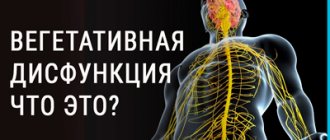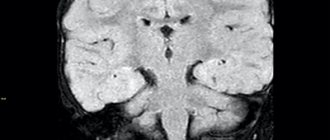Causes
The main reasons for the development of panic disorder are predisposition.
In the mental sphere, predisposition is characterized by such traits as increased suspiciousness and anxiety, a tendency to doubt, lack of self-confidence, and increased attention to health problems.
Biological factors of predisposition to panic attacks: heredity (the presence of persons with mental disorders among blood relatives), disruption of the physiological mechanisms responsible for regulating the exchange of neurotransmitters in the brain.
Social factors: information overload, sleep-wake disturbances, abuse of psychoactive substances, sedatives and sleeping pills.
In addition to the causes, factors that directly trigger a panic attack play an important role: stress, psychological trauma, overwork, hangover or withdrawal symptoms, sleepless night the night before, hormonal changes in the body.
Over the past decade, there has been a significant increase in interest in psychopathological conditions, the clinical picture of which is determined by anxiety. In our country, these conditions have traditionally been considered within the framework of affective disorders, neuroses and psychogenic reactions. However, scientific data accumulated during the 70-80s indicate the need to revise traditional nosological views and allocate anxiety disorders into a separate diagnostic category [1,2]. It usually includes panic disorder, various types of phobias, generalized anxiety disorder, obsessive-compulsive disorder, and disorders associated with mental stress. Adjacent to this category is a large group of shallow mental disorders characterized by so-called subsyndromal anxiety.
Epidemiological studies show that anxiety disorders are the second most common group of mental disorders after mood disorders. Their prevalence in the population ranges from 6% to 13.6%. [3]. At the same time, they have a huge impact on disability and quality of life [4].
Since anxiety is a universal psychophysiological phenomenon associated with adaptation to stress, it is important to distinguish between normal (adaptive) and pathological anxiety [5, 6].
Normal anxiety can be defined as a feeling of emotional discomfort caused by uncertain prospects. It is associated with a threatening situation, intensifies with an increase in its subjective significance, and increases under conditions of a lack of time and information. Adaptation anxiety, as a rule, is short-lived and does not reach excessive strength that interferes with activity (Table 1).
Anxiety is a universal psychophysiological phenomenon associated with adaptation to stress
Pathological anxiety can also be provoked by external circumstances, but its occurrence is largely determined by internal reasons. Pathological anxiety is not associated with a real threat and is inadequate to the significance of the situation.
An important difference between pathological anxiety is its strong severity. Therefore, painful anxiety causes severe subjective experiences, leads to a decrease in productive activity and often takes over consciousness. In addition, pathological anxiety usually manifests itself in the form of specific psychopathological syndromes.
Table 1. Differences between adaptive and pathological anxiety
| Normal (adaptive) anxiety | Pathological anxiety |
| Due to a real external threat | Caused by internal reasons, but can be provoked by external circumstances |
| Increases in conditions of significance of choice | Not adequate to the real significance of the situation |
| Increased by lack of information | Does not depend on objective information |
| Strengthens when there is a lack of time, helps speed up decision making | Blocks constructive decision making |
| Can be controlled and suppressed by the subject himself | Is not amenable to subjective control, takes over consciousness |
| Subjectively experienced as a natural reaction to a situation | Subjectively experienced as excessive and inadequate, has specific clinical manifestations |
Detailed psychopathological qualification of these syndromes is often difficult and requires the involvement of psychiatrists. However, in most cases, to determine medical tactics, it is enough to establish only the type of pathological anxiety. There are two such types: paroxysmal and constant [1]. Each of these types can be divided into several subtypes that correspond to the main nosographic groups of anxiety disorders.
The main distinguishing features of paroxysmal anxiety are the episodic occurrence and intensity. A typical attack is characterized by rapidly growing anxiety, which turns into fear, accompanied by a large number of autonomic disorders and unpleasant bodily sensations. [6,7]. Panic anxiety is usually experienced as a feeling of immediate threat to the individual’s existence or the integrity of his “I”. Patients experiencing such anxiety complain of inexplicable fear, a feeling of approaching death, or a feeling of loss of sanity. Their behavior at the time of the attack is characterized by inhibition or uncoordinated and limited arousal - panic.
The physiological mechanisms of paroxysmal anxiety are associated with pathological activation of the hypothalamus and vegetative centers of the brain stem, which determines polymorphic vegetative symptoms, as well as unpleasant bodily sensations, which the doctor pays attention to first when contacting such a patient. However, it should be borne in mind that in the genesis of paroxysmal anxiety, the overlying structures of the brain also play an important role - the limbic system, hypothalamus, amygdala, septum, hippocampus, prefrontal cortex, etc. [8].
In social phobia, fear is associated with situations of interpersonal contact. The main experience is the fear of being in a humiliating or awkward position.
Disorders that cause anxiety attacks include panic disorder, agoraphobia, social phobia, and specific phobia. All of these disorders are characterized by anxiety attacks, which can occur spontaneously (as in panic disorder) or in response to some stimulus. Depending on the stimulus that provokes an anxiety attack, various types of phobias are distinguished. With agoraphobia, anxiety is provoked by situations in which the patient feels alone and cannot get the necessary help in case of illness. Usually this feeling occurs in confined spaces, when moving away from home, in a crowd, or when it is necessary to be alone. Agoraphobia typically develops in people who already have panic disorder or have had isolated panic attacks in the past.
In social phobia, anxiety attacks are associated with situations of interpersonal contact, or the need to act in the presence of other people (so-called performance phobias). The main experience that occurs in such patients is the fear of being in a humiliating or awkward position.
With a specific phobia, anxiety attacks occur upon contact with certain objects or situations specific to each patient. Most often, such irritants are animals or insects (dogs, spiders, etc.), natural phenomena (thunderstorm, hurricane, etc.), the sight of blood, injections, as well as certain circumstances (flying on an airplane, riding in an elevator, etc.). ).
The most important signs of phobias, in addition to the connection of paroxysmal anxiety with a specific stimulus, also include the patient’s avoidance of this stimulus. This phenomenon is usually referred to as avoidant or restrictive behavior.
Disorders accompanied by paroxysmal anxiety are very common. Table 2 shows their lifetime prevalence rates [1]. The medical significance of these disorders is due, first of all, to the difficulties of differential diagnosis. Compliance issues are also of great importance, especially in cases where patients, due to anxiety, avoid visiting the doctor, do not comply with the regimen, or do not take medications.
Table 2. Lifetime prevalence in the population of disorders accompanied by paroxysmal anxiety
| Disorders | Lifetime frequency (%) |
| Panic disorder | 1,7 – 2,9 |
| Agoraphobia | 0,7 – 1,1 |
| Social phobia | 3,5 – 6,7 |
| Specific phobia | 7,2 – 11,3 |
Constant anxiety
A distinctive feature of this type of anxiety is its constant presence over a long period of time. [9, 10, 11]. Constant anxiety, like paroxysmal anxiety, is closely related to autonomic arousal, but this relationship is not expressed to the same extent. Therefore, autonomic symptoms do not necessarily occupy a large place in the clinical picture. Persistent anxiety is usually experienced as worry or worry about upcoming events or their consequences. This type of anxiety in different disorders has its own clinical characteristics, which are discussed below.
The mechanisms of constant anxiety, as well as paroxysmal anxiety, are associated with the limbic system, amygdala, septum and hippocampus. However, in its genesis, the prefrontal cortex and brain systems responsible for the perception of exteroceptive stimuli (thalamus, somatosensory, auditory and visual cortex) seem to play a larger role [12, 13]. There is evidence of a close connection between persistent anxiety and cognitive impairment, which is especially noticeable in the initial subclinical stages of dementia.
Persistent anxiety occurs in generalized anxiety disorder, adjustment disorders, stress disorders, as well as in a number of other conditions encountered in medical practice.
Patients with generalized anxiety often show signs of increased autonomic arousal, which is expressed in tachycardia, sweating, dry mucous membranes, difficulty breathing, nausea, chills, gastrointestinal and other somatic symptoms
The main symptom of generalized anxiety disorder is excessive chronic anxiety, which is supported by constantly arising anxious expectations and worries. This concern arises for various unrelated reasons (for example, due to family, economic situation, work, health, etc.). These reasons are of an everyday nature, often replacing each other or coexisting. At the same time, the readiness for anxiety remains even when the events that bothered the patient are safely resolved. Patients with generalized anxiety disorder usually recognize the excessiveness of their anxiety, as well as their inability to cope with it on their own. At the same time, they believe that these unrest have real grounds.
In addition to anxious expectations, with generalized anxiety there are disturbances in the sleep-wake cycle, as well as an increase in general excitability. Patients with generalized anxiety disorder report a feeling of internal tension, combined with increased fatigue, irritability, impaired concentration and sleep disorders. Generalized anxiety disorder is also accompanied by psychomotor symptoms. Patients experience fussiness and restlessness, an inability to physically relax, as well as increased muscle tone. Against this background, tension headaches, back pain, the symptom of “restless” legs, tremors and other similar manifestations may be observed.
Patients with generalized anxiety often show signs of increased autonomic arousal, which is expressed in tachycardia, sweating, dry mucous membranes, difficulty breathing, nausea, chills, gastrointestinal and other somatic symptoms. However, these signs are currently not considered by most specialists as necessary for making a diagnosis of generalized anxiety disorder.
Persistent anxiety is often noted in disorders caused by mental stress. The most common type of such conditions are adaptation disorders. Disorders of mental activity in these cases develop after significant or subjectively significant changes in a person’s life (moving, changing marital status, industrial or academic failures, the onset of a disease, etc.). These disorders are usually short-lived, but sometimes they can last for several months or even years. For many patients, constant anxiety comes to the fore. It manifests itself in doubts, hesitations, fears about the future, as well as prolonged psychophysical stress. Disorders of appetite and increased fatigue are typical, and sometimes explosiveness, moodiness, suspiciousness or wariness are noted. These conditions are often accompanied by autonomic disorders in the form of arterial hypertension or digestive disorders. Headaches and other somatic symptoms may occur.
A special subgroup of conditions accompanied by constant anxiety are stress disorders. These disorders occur when exposed to extreme mental trauma, i.e. in situations involving the threat of death or serious physical harm to the subject himself or to other people. Currently, it is common to distinguish between acute stress disorder and post-traumatic stress disorder. Typically, acute stress disorder refers to psychopathological conditions that developed during or immediately after exposure to mental trauma and lasted from 2 days to 4 weeks[2]. If the stress disorder continues for more than 1 month, then we should talk about the formation of post-traumatic stress disorder (PTSD). And if it continues for more than 3 months, then this disorder enters the chronic phase. It is important to note that PTSD can occur long after the stress has occurred.
Although constant anxiety underlies stress disorders, it does not always come to the fore in the clinical picture. The clinical picture of these disorders is determined by a wide range of states of altered consciousness and self-awareness (mental numbness or emotional anesthesia, a feeling of detachment, depersonalization-derealization phenomena, amnesia). These phenomena are usually combined with intrusive (i.e., invading consciousness) symptoms in the form of recurring thoughts, images, dreams, illusions, experiences and overwhelming ideas. This also includes signs of increased mental sensitivity and avoidance of stimuli reminiscent of the stress experienced. Another sign of a stress disorder is a persistent increase in excitability. This is expressed in difficulties falling asleep and intermittent sleep, fearfulness, irritability, outbursts of anger, difficulty concentrating, and mood swings. Post-traumatic stress disorder is characterized by the appearance of persistent vegetative shifts and general changes in the body's reactivity.
Constant anxiety is often observed in other mental disorders, a description of the clinical features of which is impossible in this work due to the limited scope. However, it should be noted that this type of anxiety, as a rule, accompanies persistent vegetative changes, which are presented to general practitioners in the form of functional somatic disorders (for example, thermoneurosis, psychogenic shortness of breath, “stress” gastritis, irritable bowel syndrome, idiopathic urticaria, etc.) , as well as eating disorders, sexual disorders and insomnia of a non-organic nature. In many such cases, we are talking about subsyndromal anxiety, manifested by chronic tension, inability to relax, apprehension, increased excitability, irritability and fatigue. And, although an unambiguous nosographic classification of these conditions can be very difficult, therapeutic approaches are in many ways similar to those used for other forms of persistent anxiety.
Persistent anxiety is quite common [1] (Table 3). It is especially often detected in patients with somatic diseases. Thus, the frequency of generalized anxiety disorder in coronary heart disease reaches 24% [14], and in diabetes mellitus it ranges from 14% to 40% [15, 16]. 18–40% of trauma patients develop clinically defined PTSD [17, 18], as do a large number of people who have undergone cardiac surgery [19]. At the same time, symptoms of anxiety may resemble signs of corresponding diseases and affect the patient’s general well-being and quality of life.
Table 3. Lifetime prevalence in the population of disorders accompanied by persistent anxiety
| Disorders | Lifetime frequency (%) |
| Generalized anxiety disorder | 4,2 – 6,6 |
| Post-traumatic stress disorder | 7,8 – 9,2 |
Psychopharmacotherapy of pathological anxiety
Pharmacological therapy for anxiety disorders is currently based on the use of two classes of drugs: antianxiety drugs and antidepressants. In turn, among anti-anxiety drugs, benzodiazepine tranquilizers (BZD) and hydroxyzine (Atarax) should be mentioned, and among antidepressants, selective serotonin reuptake inhibitors (SSRIs).
Benzodiazepines
The advantages of BZDs are their high anti-anxiety activity, good tolerability, and the rapid onset of a therapeutic effect. The negative aspects of the action of BZD are associated with the risk of dependence, sedation, impairment of cognitive processes and an increase in tolerance. With abrupt withdrawal of drugs from this group, a rebound syndrome usually occurs, which is expressed in increased mental manifestations of anxiety and its vegetative accompaniment. In the presence of physical dependence, a withdrawal syndrome appears, which is characterized by severe anxiety, sleep disturbances, nausea, headaches, dizziness, increased sensitivity to light and noise, tremors, increased body temperature, fluctuations in blood pressure, convulsions and changes in consciousness up to delirium.
Constant anxiety is very common and is especially often detected in patients with somatic diseases
The use of BZDs for anxiety disorders should be very limited and, if possible, limited to only occasional use for paroxysmal anxiety, in particular, for the relief of anxiety attacks. Their short-term use for acute stress anxiety is reasonable (but not uncontroversial).
BZD should not be prescribed to patients with a history of substance abuse or personality disorders. The use of BZD should be avoided in cases of persistent anxiety, especially in generalized anxiety disorder, adjustment disorders, PTSD and subsyndromal anxiety. The use of these drugs in these cases leads to unreasonable escalation of doses, impairment of cognitive functions, addiction, and motor impairment [20].
Hydroxyzine (Atarax)
Hydroxyzine began to be actively used for the treatment of anxiety relatively recently. According to its neurochemical properties, it is an antagonist of H1-histamine receptors. This drug also has low anticholinergic activity. The mechanisms of its action remain unexplored. However, the therapeutic effects of hydroxyzine are not limited to the effect on the histamine system, since under experimental conditions this drug exhibits an anti-anxiety effect similar to the action of fluoxetine, imipramine and chlordiazepoxide and does not coincide with the effect of another typical H1-histamine receptor antagonist, chlorpheniramine [21].
Hydroxyzine has proven to be a very effective treatment for chronic anxiety and, primarily, in the treatment of generalized anxiety disorder. It also has high activity against prolonged adjustment disorders and persistent subsyndromal anxiety. There is evidence that hydroxyzine reduces the number of panic attacks in panic disorder and may also help normalize sleep. It can be successfully used for various conditions characterized by prolonged psycho-vegetative stress. The beneficial properties of hydraxizine in the treatment of somatic manifestations of anxiety are its antiemetic effect and antipruritic effect.
The psychopharmacological action of hydroxyzine consists of two phases. In the first phase (within 5-8 days), a general sedative effect, characteristic of many antihistamines, predominates. This period may be accompanied by a number of side effects (drowsiness, lethargy, weakness), apparently due to the direct antihistamine effect. The second phase, usually starting from 6 to 9 days of therapy, is characterized by the gradual disappearance of the phenomenon of sedation and an increase in anti-anxiety and vegetative-stabilizing effects. An important feature of the action of hydroxyzine, which distinguishes it from benzodiazepines, is its positive effect on memory and attention [22, 23].
The advantage of hydroxyzine compared to benzodiazepines is the lack of development of tolerance to its anxiolytic effect, even with long-term use. When you stop taking this drug, there is no withdrawal syndrome or rebound symptoms. Unlike benzodiazepines, its use does not develop dependence. Hydroxyzine does not have euphoric properties. And after abruptly stopping taking this drug, a gradual increase in anxiety is observed only after 3-5 days.
Antidepressants
There are several groups of antidepressants, many of which are successfully used in the treatment of anxiety disorders. However, until recently, antidepressants—selective serotonin reuptake inhibitors (SSRIs)—remain the first choice drugs. Drugs in this group are indicated primarily for paroxysmal anxiety (panic disorder, agoraphobia, social phobia, some cases of specific phobia). In addition, they have proven effective in cases of severe persistent anxiety (post-traumatic stress disorder and generalized anxiety).
When prescribing SSRIs, it is necessary to keep in mind the transient increase in anxiety that is often noted during their prescription (the so-called initial anxiety), the appearance of gastrointestinal discomfort, sleep disturbances, as well as the suppressive effect of these drugs on sexual function and appetite. There is information about an increase in body weight under their influence, as well as cases of withdrawal syndrome. In addition, possible drug interactions due to the inhibitory effect of SSRIs on the liver enzyme system—cytochrome P450—should be taken into account [24].
For anxiety disorders, other drugs (sedatives, antipsychotics, anticonvulsants) are sometimes successfully used.
A clinically significant problem is the choice between different drugs in this category. Since various SSRIs are approximately the same in their pharmacological activity, their selection in the treatment of pathological anxiety should be based on the spectrum of side effects, as well as the relationship between stimulant and sedative properties. There is still little reliable information on this matter. However, given the literature and clinical experience, some preliminary guidelines can be used.
Thus, according to the severity of the sedative effect, SSRIs can be distributed as follows: Fluvoxamine => Paroxetine => Sertraline => Citalopram => Fluoxetine.
According to the ability to provoke initial anxiety: Fluoxetine => Sertraline => Paroxetine => Citalopram => Fluvoxamine.
According to the ability to cause withdrawal symptoms: Paroxetine => Sertraline => Citalopram => Fluvoxamine => Fluoxetine
By overall incidence of side effects: Fluvoxamine => Fluoxetine => Paroxetine => Sertraline => Citalopram
As for side effects, the most common for citalopram are headache, dry mouth, tremor, dizziness and sweating. Sometimes there is increased drowsiness; in case of overdose, a pronounced cardiotoxic effect is possible.
Side effects of fluoxetine include headache, rash, psychomotor agitation, akathisia, sleep disturbances and appetite suppression. In addition, this drug has the longest half-life, which on the one hand reduces the possibility of withdrawal syndrome and allows its use in patients with low compliance. On the other hand, fluoxetine therapy requires a longer period to establish equilibrium concentrations and produce a therapeutic effect.
When prescribing fluvoxamine, nausea, diarrhea, dizziness and tremor are most often observed. The named drug has a pronounced sedative effect, but it has almost no effect on sexual functions and does not lead to an increase in body weight.
Paroxetine is more likely to cause sexual dysfunction, sweating and weight gain. It has a fairly pronounced sedative effect. It can also cause constipation. And when stopping treatment with paroxetine, withdrawal syndrome occurs more often than with other SSRIs.
Sertraline has the ability to cause diarrhea, headache, dizziness and tremors, disrupt sleep and cause sexual dysfunction. This drug is the only one in this group that does not cause an increase in prolactin.
Along with these groups of drugs, other drugs (sedatives, antipsychotics, anticonvulsants) are sometimes successfully used for anxiety disorders. However, the positive effect obtained with their help in one patient cannot always be reproduced in another. In some cases, these drugs have low pharmacological activity or have serious side effects. Therefore, their use is not considered in this work.
[1] Other types of anxiety (for example, obsessive and psychotic) are much less common in general practice.
[2] This work uses the criteria for stress disorders of the American Classification of Mental Disorders - DSM-IV-TR. ICD-10 uses slightly different time criteria, however, the principle of taxonomy of stress disorders is the same.
Symptoms
The main symptom of this disorder is sudden panic attacks and, subsequently, fear of repetition of these attacks. On average, a panic attack lasts from 5 to 15 minutes.
To be diagnosed with panic disorder, the attack must occur more than once. Symptoms are divided into two groups: feelings of fear and somatic symptoms.
- Feeling of fear. The content of fear can be different, depending on the characteristics of the psyche. The most common options: fear of death, heart attack, suffocation, losing control and going crazy.
- Somatic symptoms. Caused by overexcitation of the autonomic nervous system and changes in perception: palpitations, shortness of breath, heaviness in the chest and other parts of the body, waves of heat or cold throughout the body, dizziness, trembling, derealization, a feeling of loss of control over oneself.
During an attack, the patient is completely overwhelmed by fear, as a rule, seeks help from others, calls an ambulance or a doctor. The arriving doctors, after examining the patient, do not find any signs of illness other than a feeling of fear.
After the panic attack ends, the patient may be afraid for a long time of a recurrence of this unpleasant condition. This is the phenomenon of the so-called “fear of anticipation.”
Panic disorder is characterized by bouts of panic attacks that end in a normal state. A constant feeling of panic is no longer panic disorder, but another disease - generalized anxiety disorder.
First aid and ways to deal with panic attacks
Dealing with panic attacks takes a lot of energy from patients. Fear of anticipation is characteristic - a painful expectation of a new attack. For panic attacks, treatment should be carried out by a psychotherapist.
Important
It should be noted the differences between a panic attack and paroxysmal tachycardia. Both diseases can be accompanied by an attack of fear, palpitations, a feeling of freezing in the chest and rhythm disturbances. But with a panic attack, fear is primary (mild anxiety, then panic and an increase in cardiac symptoms), and with tachycardia - a rhythm disturbance (rhythm disturbances and palpitations, then increasing panic).
ECG monitoring (recording with a portable device continuously throughout the day) can detect paroxysmal tachycardia. It is important to exclude heart pathology, since during an attack of paroxysmal tachycardia it is necessary to take drugs that normalize the rhythm.
During an attack, you need to take a comfortable position and provide air access. Self-help techniques are effective. These include:
- Abstraction. A contrast shower, talking on the phone, counting (cars, windows in a building, passers-by) will help you distract yourself. Music, washing dishes, or doing crafts can help. Distraction to pain is also effective (used with extreme caution) - an ordinary rubber band for money on the wrist, which can be pulled back and released when an attack approaches, or a strong pinch on a sensitive area (the skin on the wrist or in the elbow).
- Working with breathing distracts and reduces the concentration of oxygen in the blood, which increases due to rapid breathing. The most effective method is to breathe into a paper bag held tightly to your face until anxiety and fear disappear. A simplified version—breathing into folded palms—is less effective, but can be used discreetly in a crowded place. Slow breathing (due to slow exhalation) and breathing “in a square” also helps, when you mentally draw a square with “sides” of three to five seconds - inhale, pause, exhale, pause.
After a panic attack, it is important to ensure peace and find an opportunity to lie down.
Treatment
This disease is one of the most benign in psychiatry and has a good prognosis with adequate therapy.
The most effective treatment methods:
- Drug therapy: tranquilizers, antidepressants, neurometabolic therapy, mood stabilizers and neuroleptics.
- Psychotherapy: cognitive therapy, psychodynamic methods.
- Biofeedback therapy.
- Physiotherapy.
- Exercise therapy, massage, reflexology.
How to quickly help
Find out more about how you can relieve a panic attack at home and using improvised means here.
Treatment of panic disorder at the ROSA Clinic:
- Quick relief from a panic attack. Prevention of recurrence of attacks.
- Examination of the nervous system and mental sphere. Identifying the causes of the disease.
- Safe medicinal, psychotherapeutic and non-medicinal therapy methods.
- Own hospital.
- Around the clock.
- Anonymously. We don't register.
Treatment of anxiety disorders in
Psychotherapists strongly recommend that everyone pay attention to their psychological state and, if even minor deviations from the norm are detected, seek professional help. Any increased anxiety that lasts for several hours or even several days is already a reason to consult a doctor. The psychotherapeutic center employs experienced psychotherapists who can help anyone in the treatment of anxiety disorders. When working with a patient, doctors use an integrated approach, combining pharmacotherapy and psychotherapy. This allows you to achieve positive results in the most difficult situations. Benefits of treatment in:
- accurate diagnosis in accordance with international standards;
- 100% effectiveness and safety of treatment;
- complete confidentiality;
- affordable price.
Doctors help patients get rid of anxiety disorders forever, even in the most hopeless situations. The prices for treatment are reasonable and justified by the quality of the services provided.
Causes of the occurrence and development of the disease
Experts believe that the following factors contribute to the onset of the disease:
- the presence of persistent circulatory disorders, hormonal imbalances or chronic heart diseases;
- chronic form of dependence on alcohol, drugs, psychoactive substances, as well as abrupt cessation of their use;
- traumatic brain injuries and their consequences;
- being in a situation of prolonged stress;
- character traits - melancholic temperament, anxious accents in character;
- tendency to exaggerate dangers due to their high susceptibility;
- neurotic and mental disorders: depression, neurasthenia, hysteria, schizophrenia, paranoia, various manias;
- mental trauma in children at an early age and in adults in extreme situations - war, earthquake, being in a state close to death, loss of a loved one or their support, and others.
Psychologists view the process of anxiety in different ways:
- adherents of psychoanalysis believe that the reason is the regular suppression of one’s own desires;
- the latter believe that the reason is a breakdown in the connection between the stimulus and the mental response to the stimulus;
- still others believe that the reason is the reaction of the psyche to distorted mental images of a person.
Situational anxiety
This type is caused by new circumstances or changes. This is also provoked by various events that bring certain inconvenience to a person. Its manifestation is very common. Often the patient experiences panic attacks or extreme anxiety in certain situations. An environment that makes one person anxious may not affect another at all. For example, some people feel uncomfortable in crowds or in narrow places. Therefore, being in a tightly packed line, say in a bank or in a store, causes them to feel extreme anxiety, possibly a panic attack. Others, however, experience anxiety when major life changes occur. Such as going to college, getting married, having children, etc.
Treatment of panic disorder
- Drug therapy (antidepressants, benzodiazepines).
- Rational psychotherapy.
Treatment is prescribed only after confirmation of the diagnosis by a medical specialist.
Essential drugs
There are contraindications. Specialist consultation is required.
- Amitriptyline (sedative, antidepressant). Dosage regimen: orally, at a dose of 12.5–25 mg/day, then the dose is gradually increased to a tolerable level (on average by 12.5–25 mg over 3–5 days). The average effective daily dose is 150–200 mg/day, rarely reaching 300 mg.
- Fluoxetine (antidepressant). Dosage regimen: orally, in the first half of the day, at an initial dose of 5 mg per 1 dose. If necessary, the dose can be increased to 40-60 mg/day, divided into 2-3 doses.
- Sertraline (antidepressant). Dosage regimen: orally, in the initial dose - 25-50 mg 1 time per day in the morning or evening.
- Citalopram (antidepressant). Dosage regimen: orally, for 1 week the recommended dose is 10 mg/day, then the dose is increased to 20 mg/day. The daily dose, depending on the individual response of the patient, can subsequently be increased to 40 mg/day. The drug is taken at any time, once a day.
Diagnostics
Before treating an anxiety disorder, it should be diagnosed in the client by a psychotherapist. The disease can be diagnosed as the main diagnosis only if all types of phobias are absent, and a panic attack resulting from an established phobic situation is considered an expression of the severity of the phobia, which should be taken into account in the diagnosis first.
In order for the diagnosis to be more reliable, it is necessary to track the frequency of severe attacks. If they occur several times over the course of a month, panic disorder is diagnosed. In this case, you need to take into account:
- that the circumstances surrounding the attack should not be associated with an objective threat;
- that attacks should not be limited to predictable situations;
- that the state between attacks should be relatively free of anxiety symptoms.
Treatment options
- Drug treatment. Specialized therapy quickly equalizes the emotional background, relieves constant anxious thoughts, stabilizes the sleep-wake cycle, and the body gets the opportunity to recover.
- Work with a psychologist, psychotherapist. Rational psychotherapy helps the patient analyze and understand the primary causes of anxious thoughts, learn to distinguish between productive and unproductive anxiety, and also learn to change their attitude towards emerging troubles and problems. If you cannot change the situation, you need to change your attitude towards it!
- Relaxation skills training. To relieve the symptoms of GAD and prevent its occurrence, stress-relieving exercises are very helpful. Muscle relaxation, stabilization of blood pressure, correct calm breathing: this state, which is achieved by certain physical exercises, is beneficial for relieving the symptoms of GAD.
- Group psychotherapy. Some people with generalized anxiety disorder find it much easier to cope when they are around others with similar problems. Loneliness during illness makes a person more vulnerable.
- Lifestyle changes. This stage includes both the normalization of sleep and wakefulness, the selection of an optimal diet and light physical activity, and the exclusion of traumatic situations, which serve as a “trigger” for generalized anxiety disorder.
Related posts:
- Treatment of panic attacks: what is included in the course of treatment? Panic attack (PA) is an attack that develops in the shortest possible time...
- Paranoid schizophrenia Mental disorders are distinguished by a variety of clinical manifestations. Some diseases are temporary...
- Phobias and stress in men All people experience stress, regardless of gender. AND…
- What does drug use lead to? Addiction to drugs leads not only to loss of friends and discord...
What other medications do people diagnosed with PD use?
- hypotensive;
- p-blockers;
- tranquilizers.
As for the latter, it is worth mentioning their separate category - benzodiazepines. According to a number of studies, they really turn out to be effective in stopping attacks - they eliminate all negative symptoms and manifestations in twenty minutes. However, when taken systematically (for more than a year), they can make the patient dependent, while simultaneously contributing to the progression of the disease.
No matter how high the importance of drug treatment, it will not be possible to achieve positive dynamics without psychological intervention. Some people prefer working in groups, others prefer individual consultations. Regardless of which format is chosen, the psychologist must teach the patient to deal with panic and anxiety and control his internal state.
Thus, the disease requires a comprehensive treatment approach, which would include pharmacology, psychology, and physiotherapy. The most important thing in eliminating panic disorder is communication with the patient. It is necessary to explain that nothing terrible is happening to him and to inform him about the nature of the violations. We are talking about cognitive therapy aimed at correcting misconceptions. Next, pharmacological and physiotherapeutic methods come into play.
Treatment in a hospital (round the clock, complex, tests)
People faced with the problem under consideration are interested in: what is the best way to undergo treatment - inpatient or outpatient? The first option is definitely superior to the second! And that's why:
- You are constantly under the supervision of certified specialists who can stop an attack in a timely manner, relieve tension, and dispel depressing moods.
- A variety of physiotherapy treatments are available to you to improve your emotional state. One of the most popular and effective is ozone therapy. According to the results of studies, it allows you to overcome anxiety-phobic disorders in seventy percent of cases.
- You have the opportunity to attend specialized support groups. This is a relatively new direction, which also produces noticeable results.
You can find good rehabilitation and recovery centers in Moscow, St. Petersburg and many other cities of the country. There are quite a lot of places where effective treatment methods are practiced.
How to treat
Anxious personality deviation is determined in the patient during a conversation with a doctor, as well as with the help of psychological tests. The doctor must analyze the signs of the disease before prescribing a treatment regimen.
Treatment will help make it easier for the patient to interact with others. The main method is psychotherapy. The best results are shown by a combination of behavioral and cognitive psychotherapeutic techniques. During classes, the psychotherapist explains to the patient his usual thinking patterns and helps to correct them. Treatment of TPD is difficult to imagine without group forms of classes. They allow you to consolidate the received theoretical advice in practice through live communication with other people.
Treatment also includes the use of medications. It is preferable to use antidepressants, primarily of the SSRI class. Anti-anxiety medications (tranquilizers) may also be used. To combat the symptoms of autonomic disorders (tachycardia, etc.), beta-blockers are used.
There are contraindications, you need to consult a specialist!







